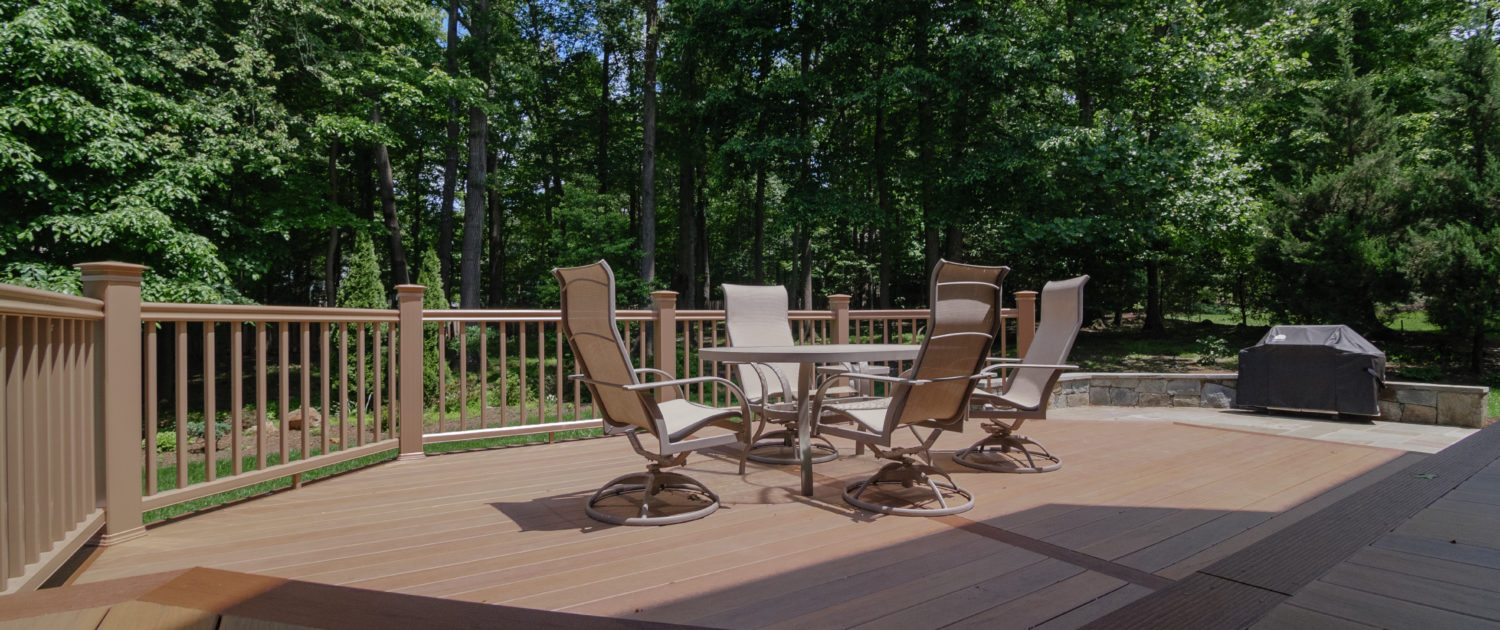Wood or Composite?
Decking options have grown exponentially. It wasn’t long ago that the only choice was wood, which came in perhaps two or three species. However, thanks to an explosion of composite lumber, plastic decking and hardwood imports, there’s now a wide array of decking available.
Whether you want a new deck, improve the safety of your existing deck or to simply replace the railings and planks, here are the basic types to choose from, each with their own aesthetics, maintenance and price range.
Pressure-treated Lumber – Despite all the competition, it is still the No. 1 decking material sold today. According to Arch Treatment Technologies, a leading producer of wood preservatives, approximately 75 percent of all new decks are finished with pressure-treated (PT) lumber. Approximately three times less expensive than composite materials, but typically require power washing & sealing every 3-4 years.
Redwood & Cedar – Both of these western softwoods are prized for their rich color and natural beauty, and because they aren’t pumped full of chemicals or preservatives. Both species contain tannin and oils that make them naturally resistant to rot, decay and voracious insects. Redwood and cedar each cost at least three times more than pressure-treated lumber and require annual power washing and a coat of finish every three to four years.
Tropical Hardwoods – Massaranduba, cumaru, red tauari, tigerwood, ipe, and Philippine mahogany are just some of the tropical hardwoods available for decking. These exotic, rich-grained woods are extremely hard, very durable and naturally resistant to rot and insects.
However, because these woods are so dense, they’re heavy and difficult to cut and drill. In fact, it’s virtually impossible to drive a nail or screw without first boring a pilot hole, which is why tropical decking is typically installed with some sort of hidden fastener that clips or screws into the edge of the boards. Typically, as expensive as redwood and cedar. Also like cedar and redwood, most tropical hardwoods weather to a soft silvery color if they’re not stained. The amount and speed of any fading depends greatly upon the deck’s exposure to sun, rain and snow.
Composites and Plastic Lumber – the fastest-growing decking materials sold today. Most products are made from polyethylene or polyvinyl chloride, and come in a wide range of colors.
Composites (Trex, TimberTech, Wolf and Veranda) are composed primarily of wood fibers and recycled plastic. The result is an extremely weather- and stain-resistant board that won’t splinter, warp, rot or split.
Plastic lumber (Azek Deck, ForeverDeck and Leisure Decking) is made from 100 percent plastic (recycled and/or virgin); it contains no wood fibers. It, too, is highly resistant to staining and decay, and free of knots, cracks and splinters.
Both composites and plastic lumber come in sizes similar to wood decking, including 2 x 4, 2 x 6 and 5/4 x 6-in. Prices vary because there are so many different companies, but composites are typically less expensive than plastic lumber. Most composite decking and plastic lumber manufacturers also offer a line of handrails, balusters, fascia and other decorative trim.
They’re extremely low-maintenance and never need to be sanded, refinished or stained. While composite decking materials are more expensive than pressure treated wood, composite materials offer a virtually maintenance free option compared to pressure treated wood.
“Have used HPM for two projects now: Demolition of a damaged deck and reconstruction of a new one, and the replacement of an entry door. On the deck job, we were overseas on a long-planned trip and they kept us updated daily on progress with photos along with updates on challenges they encountered. Both projects were done in a timely and professional manner and I would definitely call them for future projects” A. Carmel, Springfield, VA




